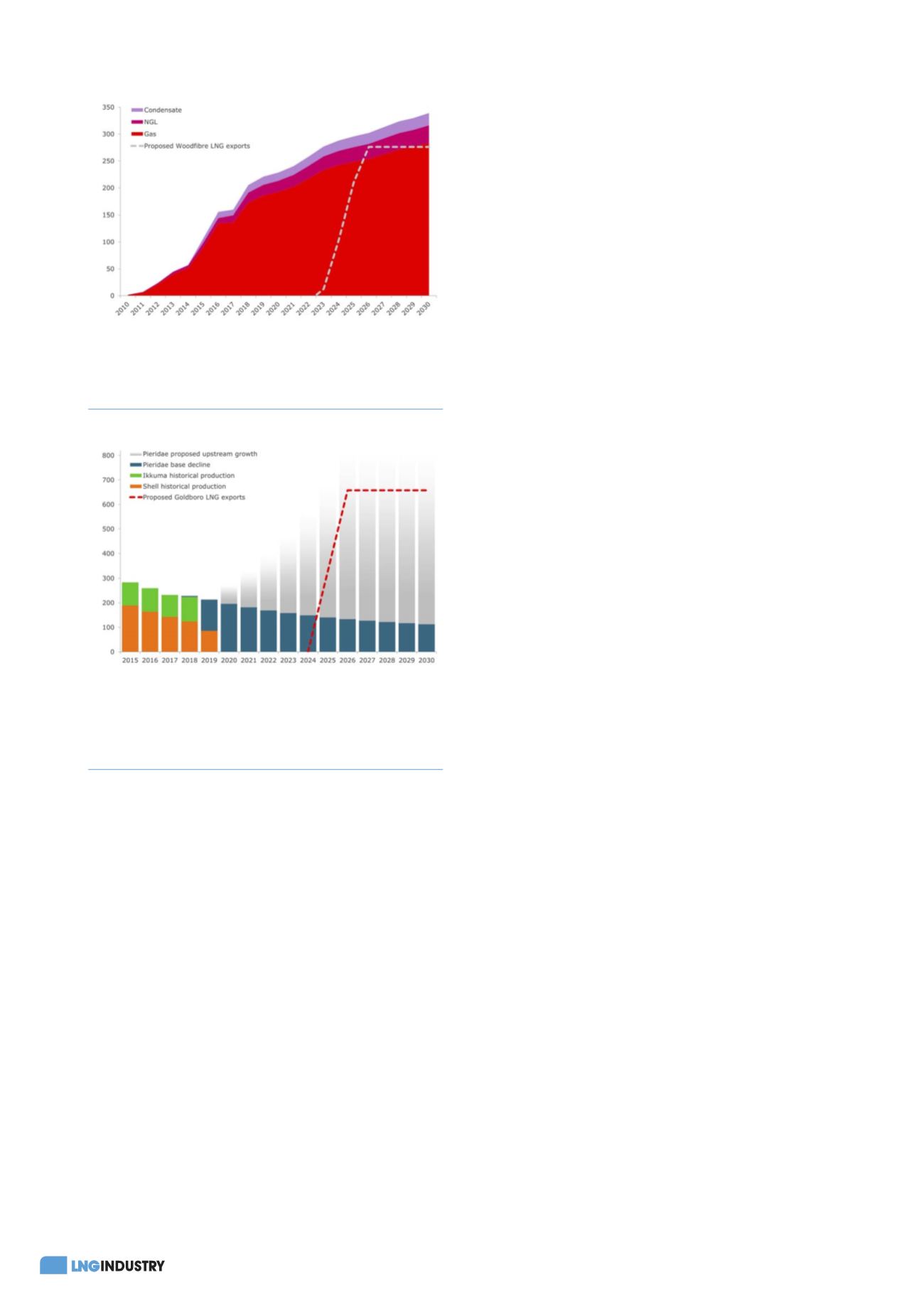
12
April 2020
US$1.5 billion in German Government loan guarantees, with
the stipulation that Pieridae refrain from hydraulic fracturing
in the extraction process.
On the downstream side, Pieridae initially entered into an
agreement in 2013 to supply German utility Uniper with
4.8 million tpy of LNG over a 20-year term. Uniper retains the
right to terminate the agreement if Goldboro fails to meet
certain deadlines, however. Sanctioning for Train 1 has already
been deferred several times, although Pieridae in July 2019
negotiated an extension of its positive FID deadline to the
end of September 2020, with commercial deliveries to Uniper
guided for a startup date at some point between
November 2024 and June 2025.
While the purchase from Shell could signal Pieridae’s
long-term commitment to Canadian LNG on the one hand,
doubts persist over the company’s financial resilience. In
particular, the Shell deal raised local concerns regarding the
ability of such a modestly capitalised player to cover its asset
retirement obligations should market conditions result in
insolvency or a withdrawal of German Government financial
support. A senior executive from Canadian Natural Resources
Ltd criticised the transaction in a letter to the Alberta Energy
Regulator in November 2019, complaining that the regulator’s
current system of rating liabilities was flawed and failed to
accurately account for well abandonment costs. Complicating
the matter is the idiosyncrasy of hydrocarbon production in
Alberta’s Foothills. Natural gas from the area is higher cost
and contains higher levels of poisonous hydrogen sulfide
(H
2
S), thus complicating any reclamation work that would
need to be carried out under a potential receivership scenario.
Local mid-size upstream players, prompted by persistently
volatile natural gas prices in western Canada, have likewise
emerged as proponents of a more integrated LNG approach. In
February 2019, a group of 10 Canadian natural gas producers
with collective output of approximately 3 billion ft³/d formed
the Rockies LNG Partnership. The consortium’s stated aim is to
receive regulatory approval for a 12 million tpy facility, attract
a larger partner to provide capital, and ultimately supply the
project with its own natural gas. Consortium members include
Deep Basin natural gas producer Peyto Exploration &
Development, as well as Montney producers such as
Advantage Oil and Gas, Birchcliff Energy, and
Seven Generations Energy, among others. Canbriam Energy
withdrew from the consortium following its acquisition by
Pacific, reducing the number of members to nine.
In October 2019, Rockies LNG CEO Greg Kist indicated an
imminent start to the regulatory process with a
commissioning date tentatively scheduled for 2026.
Additionally, the consortium plans to supply the project via a
long-haul pipeline with some existing regulatory approvals.
Project partners have expressed interest in Enbridge’s
Westcoast Connector Gas Transmission Project and TC Energy’s
Prince Rupert Gas Transmission route, which were originally
intended to service Shell’s Prince Rupert LNG project
(21 million tpy) and the Petronas-operated Pacific Northwest
LNG project (18 million tpy), respectively. Both LNG schemes
were cancelled in 2017, although their corresponding
midstream projects already have environmental certificates
and have completed a certain amount of permitting.
Considering the pipeline routes under consideration,
Rockies LNG’s implied site location is likely to be somewhere
in B.C.’s Prince Rupert area, which is located near the Alaska
border approximately 115 km northwest of Kitimat.
Additionally, project partners have tentatively indicated plans
to develop the project as a floating LNG (FLNG) facility. Under
this scenario, Rockies LNG would potentially require three
barges and forego capital-intensive land-flattening activities
associated with onshore developments, although no cost
estimates have been disclosed yet.
The emissions imperative and
federal policy carrots
In tandem with greater integration with upstream
supply, Canadian LNG development concepts have
taken a greener turn since late 2018. In large part, this
development has resulted from B.C.’s increasingly stringent
greenhouse gas (GHG) emissions requirements, although the
federal government has provided some financial support for
improvements in energy efficiency.
On the regulatory front, the B.C. provincial government in
late 2018 adopted stricter provincial GHG emissions targets as
part of the CleanBC plan. CleanBC ultimately aims to reduce
provincial emissions to approximately 12.75 million tCO
2
e
annually by 2050, or 80% below 2007 emissions levels. In
terms of the energy industry specifically, the plan caps
Figure 1.
Pacific Oil & Gas Montney production by
hydrocarbon type and proposed Woodfibre LNG output
(million ft3/d). Source: Rystad Energy UCube.
Figure 2.
Pieridae Energy production by historical company,
proposed growth profile, and proposed Goldboro LNG
output (million ft3/d). Source: Rystad Energy UCube;
Rystad Energy research and analysis.








